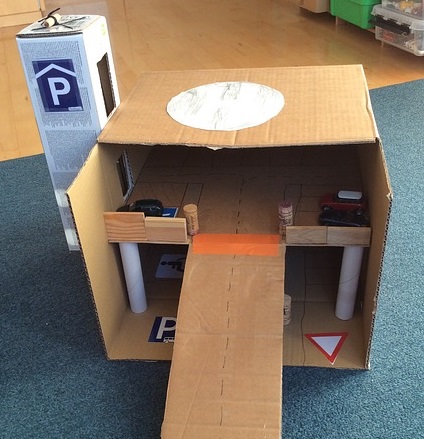Project-based learning through developing the five attitudes of creative people
Developing deep learning competencies can be achieved in many ways, but one of the most exciting is through project-based learning.
- Project-based learning is a learner-centered pedagogy that involves learners identifying a real-world problem and engaging in hands-on learning to identify a solution.
Dr Melissa Cain from the School of Education at The University of Queensland notes in this next video how a deeper engagement with content can be developed through engaging in project-based learning.
Project based learning using Piirto’s five core attitudes – Watch video lecture (4:52 minutes)
MELISSA CAIN: Do you have the right attitudes for deep learning? Jane Piirto, in her work ‘Creativity for 21st Century Skills’ identified five core attitudes that creative people possess. These are:
- self-determination
- openness to experience
- risk taking
- a tolerance for ambiguity
- group trust
We see these attitudes displayed in episodes of deep learning. One of the ways to further develop these attitudes and deep learning competencies is through project based learning.
In a nutshell, project based learning (or PBL for short) is learner-centered pedagogy applicable to all ages. It involves students identifying a real-world problem with authentic connections and engaging in a hands-on project to identify a solution.
Project based learning places emphasis on the process of inquiry over the final product. Through connecting with students’ interests, prior experiences, and family funds of knowledge, well-constructed projects excite and motivate students to work collaboratively on learning about a topic in depth over an extended period of time.
This includes students sharing their findings with others in insightful ways, and using a range of communication strategies to suit various learner preferences and abilities.
Through project based learning, students connect with experts in the real world to initiate a sustained inquiry.
In project based learning, student choice and student voice are critical elements in igniting intrinsic motivation, developing a sense of agency, and placing the learners as captains of their ship.
Project based learning has a focus on deep learning skills such as:
- critical thinking
- collaboration
- communication
- innovation
- creativity
Project based learning also fosters teamwork and positive social relations, and develops higher order cognitive skills so that learners engage in analyzing, synthesizing, justifying, evaluating, and creating. (Bloom’s Taxonomy)
To undertake such a project successfully, students will also need to demonstrate Piirto’s core attitudes of self- discipline, openness to experience, risk taking, a tolerance for ambiguity, and group trust.
- To summarize, project based learning involves an in-depth investigation of real world topics, manipulation of authentic objects, active learning through projects which occur over weeks or months, and is achieved through questioning experts, making observations, making connections, and demonstrating learning to others.
Project based learning incorporates the Universal Design for Learning (UDL) principles. These provide a framework that helps teachers plan learning activities to meet the diverse needs of all students.
These principles include multiple means of representation to allow for connections to be made by all students through varied means of presenting information, multiple means of action and expression so that students can choose topics, ideas, and information, as well as how to organize them, display them, and how they will present them for their chosen audience, and multiple means of engagement Students work with their own interests and on authentic problems.
Personal relevance and subjectivity is important. Students are engaged and motivated by their team and the technology they use. In future, you might like to consider developing learning activities that involve extended projects and which develop attitudes essential for moving students from surface to deep learning.
The Creative Arts Charter School video is useful for demonstrating a number of key concepts in motivating students for deep learning. Take the time to revisit this video and look for the following main concepts of project-based learning:
1. Learners working with a real-world issue that is presented in an authentic manner
2. Exploration of the topic begins with a ‘big question’ and extends over weeks or months
3. Learners connect with experts or ‘knowledgeable others’
4. There is an emphasis on the process of inquiry over the final product
5. There are opportunities for collaborative learning, teamwork, and the development of positive social relationships
6. Learners present their findings to others in insightful ways
Link to video: Creative Arts Charter School’s Approach to Project Based Learning (5.59 minutes)
[Tom Scott]. (2013, Jan. 16). Creative Arts Charter School Approach to Project-Based Teaching. [Video File]


